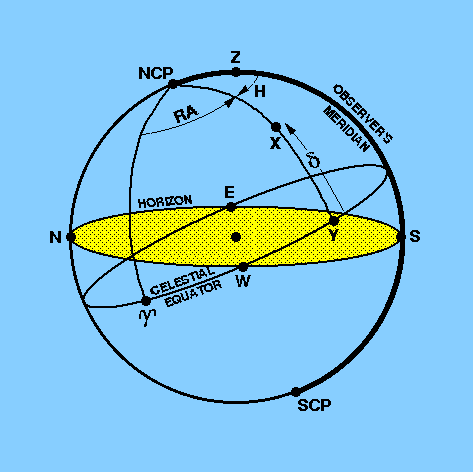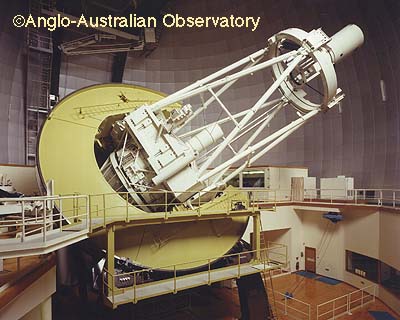| the equatorial coordinate system |
|
| figure 15: |
The equatorial coordinate system. |

| figure 16: |
An equatorially mounted telescope - the 3.9 m Anglo-Australian
Telescope (AAT) in Australia. |

| table 1: |
An extract from a typical star catalogue. |
